Training is the first brick of your relationship with your fantastic fur buddy. Although some dogs are behaving well without training. However, you will find that you’ll need training at some point to make your dog do some particular behavior. All of us are excited to see our dogs advance through their learning path, which is why I thought of some tips that will make any dog learn faster.
For me, I have always dreamt of seeing Kira, one of the most behaved and playful dogs ever from the first second I brought her home, and as we progressed together, I learnt the keys to make training as successful as possible. I have put together a list of 31 training tips that will help any dog learn faster.
31 tips on how to train a dog faster
| Tip that makes a dog learn faster | Uses of the practise |
| Start Training From A Very Young Age | Increases speed of learning and intelligence from a young age. |
| Choosing The Best Reward | Increases speed of training. |
| Using A Variety Of Treats | Keep the training exciting. |
| Decrease Treats As You Progress | Make the dog start listening to you without reward. |
| Using A Clicker Or A Constant Keyword For Training | Increases speed of training. |
| Developing Your Relationship With Your Dog | Will help you in the long run to have a friend. |
| Using An Enthusiastic Voice | Keep the training exciting. |
| Don’t Be Boring | Keep the dog aroused and excited. |
| Choosing The Best Time Of The Day To Train | Maximize training potential. |
| Determining The Duration For Training Sessions | Don’t make the dog bored. |
| Understanding The Best Time To Back-Off | Help keeping the training fun |
| Take A Close Look At Your Dog’s Body Language | Makes you understand him more. |
| Understand Dog Parks | Avoid possible fights. |
| Socializing Your Puppy Early | Help keeping your dog sweet and gentle. |
| Distractive-Free Areas At First | Increase the dog’s learning speed at first. |
| Move Slowly To A More Distracting Areas | Increase the dog’s repondness. |
| Draw An Image Of What You Want From Your Dog | Help in sketching the training steps. |
| Don’t Change Rules And Stay Consistent | Help keeping the dog responsive. |
| Sketching The Household Rules Before You Start Training Your Dog | Help in sketching the training steps. |
| Turning Training Into A Habit | Help keeping the dog responsive. |
| Cut The Bad Habits As Early As Possible | Helps to eliminate the possible behavioral problems |
| Handling Mistakes Gently | Keeps the relationship between you and your dog. |
| Make sure To Revise Daily/Weekly | Keeps the dog responsive. |
| Don’t Stop Training When The Dog Is Adult | Keeps the dog responsive. |
| Exercise Before Training | Calms down hyper dogs. |
| Don’t Change Keywords For The Same Action | Keeps the dog responsive. |
| Using Hand Signals with verbal commands | Increase the dog’s learning speed at first. |
| Be Realistic | Understand that perfection requires training. |
| Ask For Other People To Train Him | The dog will listen to all the people living with him. |
| Increase Your Dog’s Intelligence | Help making the learning faster. |
| Read And Ask | It just makes you understand more about dogs in general. |
I am not here to give you a guide of what you should do and don’t do. While I’ll give you a list of 31 tips that will help you, I will talk to you about the psychology of dog training as well, and believe me, if you understood this, you would be able to invent a list of tips for yourself. Let us first walk through a vital comparison that is, unfortunately, unfair.
New School training vs. Old School Training
In every article for me, I have to bring this up. No matter what the subject is, I have to address this issue that is concerning me. We are in 2020 now, and some people still believe that hitting a dog might be the best way to train him. This thing hurts me. Unless you didn’t read our article about Best Dog Training Books, you could jump to the next section immediately to save your time.
If you didn’t read it, though, let me put the comparison here and explain to you the idea of dog training.
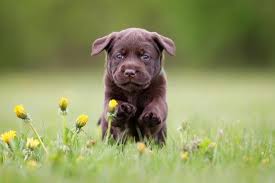
When you bring a dog home, you’re committed to developing a friendship with him. Why? You have taken him from his mother and sisters and put him with you, that means he must find you a substitute for his family. I genuinely believe that all of us treat our dogs the best way. However, due to misunderstandings, people still believe that hitting a dog may be how you should tell him that he did something wrong, and in fact, it’s quite the opposite.
Training your dog by hitting/yelling/showing him that you’re a leader will make him always afraid of you, and this will trigger aggression inside him. Although this will make him listen to your commands, he won’t be happy to do so. So, for example, if your dog went off-leash by mistake, you can never get him back again because he is terrified of you. You won’t build your relationship with love and happiness. You will create it with fear.
However, training your dog by the positive methods like giving him a treat for everything he does correctly is quite the opposite. It forces you to look at what your dog is doing successfully and treat him to do it more often, and I will give you an example:
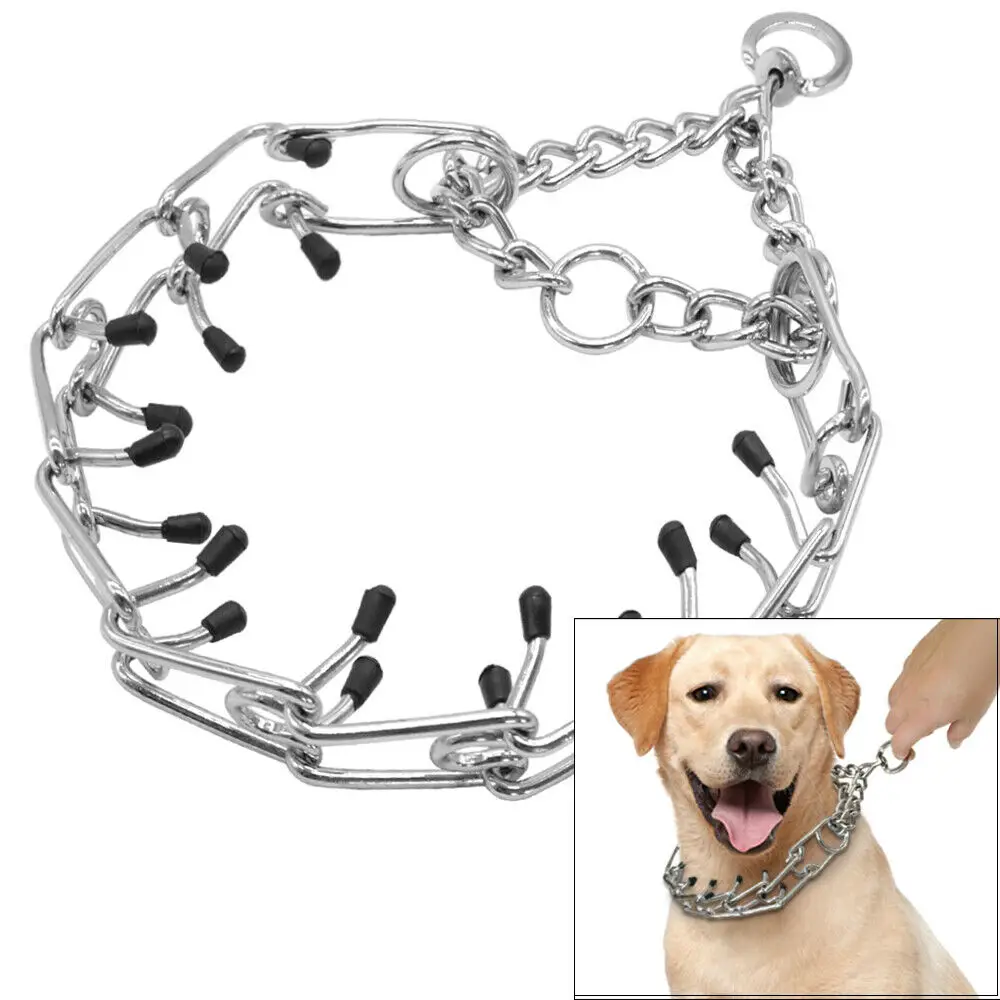
Imagine the following scenario: You are in a restaurant that allows clients to have their dogs with them, and you want your dog to have good manners at the table like not jumping on your food or barking.
The old-method: You will sit with him and start eating if he tried to lunge on you, you would mishit him while telling him you’re a bad boy or you will use a choke collar to correct this behavior.
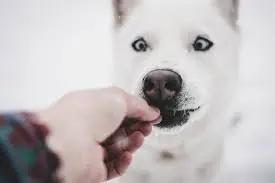
The Positive-method: You will sit with your dog and start giving him treats every couple of mins for being so lovely and polite. When he starts lunging on you, you will ignore him until he returns to his place and give him a tasty treat and praise, telling him how beautiful he is!
Both had the same results but with a difference in the method and, subsequently, the difference in our relationship.
The Main Idea Of Dog Training
I guess you already got it. You are searching for the best moment to praise your dog when he is doing the behavior that you like. You are continually trying to improve his self-confidence and continuously telling him that he is a good boy.
This approach would make the relationship between you and your dog as strong as ever that the dog will start searching for the behaviors that please you even if you didn’t train him to do so.
A funny Story
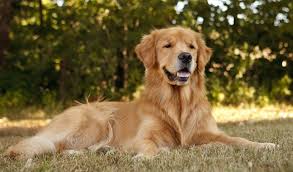
I was once walking my dog with a friend of mine. She has a Golden Retriever who adores her. We left the dogs to play, and because I trained Kira to come-when-called, she responds to me when I tell her to come. However, my friend didn’t teach her Golden Retriever to come when called, but they had an amazing, excellent relationship.
When it was time to go, we wanted to get the dogs back and what I saw was incredible, once my friend started walking away, her dog immediately ran to her and waited beside her. Without training, the dog didn’t want to leave her owner even though there are lots of distractions. She told her, “Hey, let’s go,” and she came running to her as happy as ever! This situation made me think that you can have a beautiful dog if you gave him the right treatment.
The 31 tips to ultimately increase your dog’s training speed and abilities
Let me remind you. I am not giving you some tips which I copied from the internet. Instead, I am trying my best to summarize all my experience with various dogs and the tricks that I found that they work great here:
Start Training From A Very Young Age
You can only train dogs to potty when they are six months old.
Untrue Quote From a lot of owners
Yes, dogs are smart, and they can learn to do anything from a very young age. I will repeat the story that I mentioned in our post about potty training quickly.
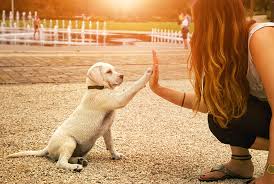
My dog has learnt to hold her potty and was ready at the age of 3 months! Yes, three months only. Not because I am a genius trainer or my dog is a genius dog. Nope, nope, nope. I only started training my dog from the moment I brought her home. From the 2nd night, I began to grab treats and teaching her. I set a timer and started following it.
A lot of people mention that dogs aren’t smart enough when they are two months and only want to play. This statement is not true at all; dogs are intelligent to learn anything at any time! And the younger they are, the faster they will learn.
A great video from Zak George explaining that concept:
Choosing The Best Reward

My number 1 tip for any owner, no matter the breed, age, or gender. You have to select the best reward for your dog. I know that many owners take this for granted, assuming that the best thing which works for their dogs is food.
However, 60% of the dogs adore playing as a treat more than the food. That’s why you have to experiment using a bunch of different treats, which include: Food, toys, games like fetch or tug of war, running after the training session, cuddling, etc.
You will find that there is a particular reward that your dog is crazy about it! He won’t be able to stop jumping when you give him that treat. Once you determine this treat, you will be on the right track.
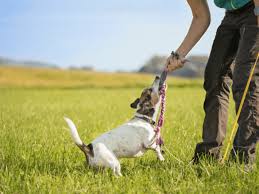
Choosing the best treat increases your dog’s learning speed by three times at least. Imagine when you were a kid, and your parents wanted you to study more, they will always offer something that you adore so that you can get excited and never leave the book to get it. Same with dogs, they will do anything for an excellent rewarding treat! My Kira can do anything for a good game of tug of war. She adores it!
Using A Variety Of Treats
It doesn’t contradict what I said in the previous one at all.
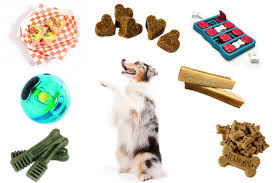
Image if you loved apples and I gave you a bunch of apples every couple of hours daily. How boring is that!! After a particular time, you will start to refuse to eat any apple. It became repetitive and boring!
Combining treats is mandatory. I know I said that you have to choose the best reward for your dog. However, you can always use the best bonus when you are starting to learn something new, then change to a variety of different treats when you start progressing.
When I start to train any dog, I mix a couple of treats from different brands in a cup, and I don’t look at the treat before giving it to the dog, which will make your dog very excited to guess what he will get next! You will be eager to know, as well. Then, I can change in the middle of the session to a quick game of tug of war or fetch as a reward. By the way, if you have a Golden Retriever like me, you will find out that he is excited by almost all the treats.
Decrease Treats As You Progress
I am not crazy. I know you are now very confused.
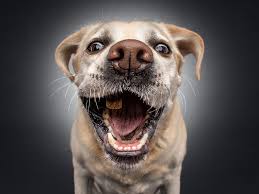
However, a common problem that I always hear from many people that their dogs started to listen to them only when they see the treat. Unfortunately, the reward now began to be a bribe for the dog to listen to the commands.
I always say, Treat is a reward; it is not a bribe.
That’s why when I start to see that the dog is really progressing and listening to the commands correctly, I start to decrease the treats gradually. For example, I will begin to reward the dog for every two successful commands. Then I will give the dog a treat for every 3, etc.
However, dogs are pretty smart. If you, for example, stick to giving them a treat every two commands only, they will get it and follow that pattern. So make sure that you are mysterious and they don’t know what they will get next and what type of reward they might have. Make sure also to decrease the treats as you progress and that they are comfortable not to take any rewards if you told them to sit or stay, for example.
Using A Clicker Or A Constant Keyword For Training
This trick will increase your dog’s learning speed four times. A common thing that I see is that people toss treats at dogs without telling them that they will do so.
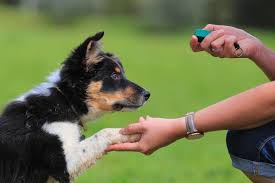
Binding a keyword with the treats is helpful, and it will tell the dog when he has done something correctly instead of making him wonder when he will take a treat. I bound the word YES! to a treat. Every time I say YES, enthusiastically, I will give Kira a treat. A good thing to use is a clicker, which has the same concept, a click for a treat.
Another important thing is to stick to the keyword you choose. As you progress, you can remove the treats and just keep the word YES or the clicker to let him understand that he has done something great and fantastic!
Timing your word or the clicker is quite essential as well, as this allows your dog to know the exact moment when he has done something correctly. Try to say it in the same second. It will also help you when you are training your dog a complicated trick that requires a couple of steps to approach, like training your dog to open the door.
A great video from Zak George explaining how to teach your dog to respond to clicker:
Developing Your Relationship With Your Dog
This a lifelong tip that will ensure that your dog will listen to you and love sticking to your side even if you didn’t train him well.
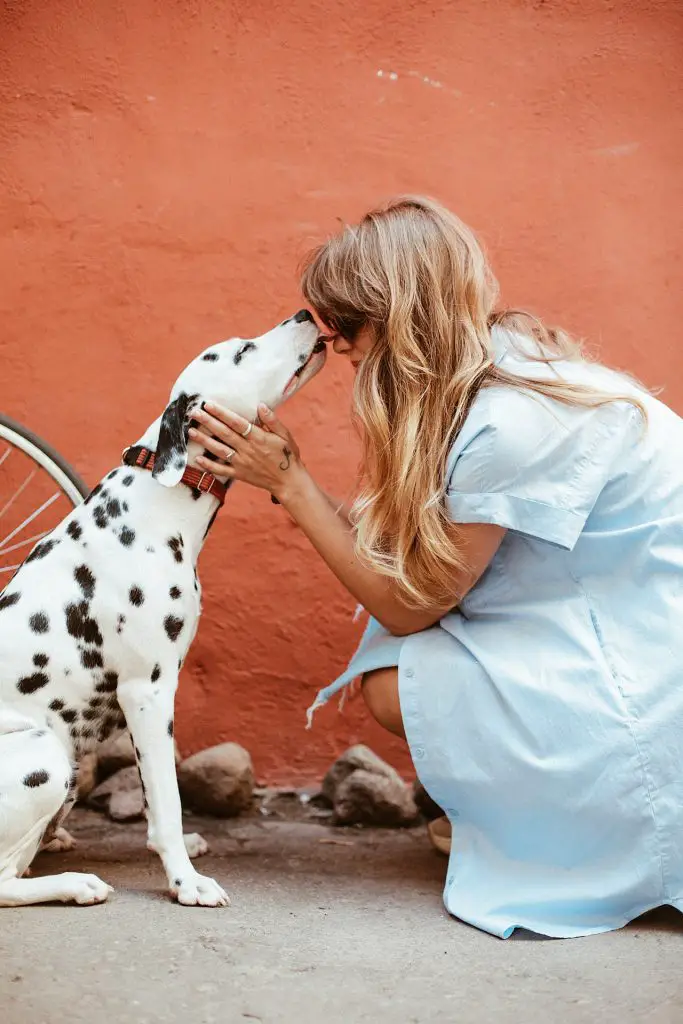
Your bond with your dog is essential, and I can’t help but mention the fantastic book Bonding with your dog by the tremendous writer Victoria Schade. And by the way, if you don’t want to buy it, we will be making a giveaway for five people at the beginning of 2020, make sure to say that you will participate in the comments.
Bonding with your dog will make you improve your relationship with your dog and make your dog excited to spend time around you. I recommend practicing what’s written in that book, I did that, and there were surprising results.
Using An Enthusiastic Voice
When you were in school, there were always two types of teachers. A teacher that you hate a lot because either he was very bad or good but very, very dull. And a teacher that you adored him because either he was very good or bad but very, very, very exciting.
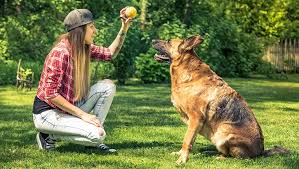
Dogs hate boredom. Standing in front of them and telling them to sit in a monotonous voice will likely make them go away and not listen to you. On the other hand, a playful, enthusiastic, energetic voice will make them very happy to listen to your commands and start running around you happy. That’s because you began to give them the energy they love.
Don’t Be Boring
That’s a follow-up for a previous couple of tips. You can see that in the last couple of tips, we understood something important. Dogs love to change and like to guess.

Dogs are pretty smart in understanding the patterns and routines. If you always force them to guess what will happen next, that will make them very excited to listen to you.
If you followed that concept in all your activities with your dog, you would find that every action became a lot funnier. For example, instead of walking your dog daily the same route, start to change paths randomly so your dog will have to guess where we are going next. Start to change your dog’s walking schedules (when he is an adult) so that he doesn’t know when we will walk or play and will stay excited to go out, etc.
The most important thing be creative.
Choosing The Best Time Of The Day To Train
Some owners don’t care about this. However, depending on your dog’s schedule, you have to determine when he should train until he grows up and becomes ready to train at any time.

For example, Kira always loved to train at midday. She was very energetic by then. She would train at night, but she didn’t have the same energy that she would do a few commands and then walked away.
Determining the best time to train your dog can be quickly done by looking at your dog’s schedule and determining when the dog is most energetic. This tip will increase your dog’s learning speed.
Determining The Duration For Training Sessions
A lot of people complain that their dogs get bored after a couple of mins and leave them.
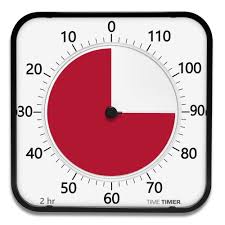
That’s because you didn’t figure out how much he should train. Remember, dogs aren’t born with training habits. You develop it over time, and as you do that, you have to understand that you can’t start by training your dog for 40 or 30 mins.
You have to start low and gradually increase the duration. So how to determine the best length?
Grab a stopwatch and start training your dog and keep training until you see that he refuses to respond to you anymore. See the time taken, and that will be the best duration. Now, every day make sure to progress that and increase the period by a min or two. By doing this, it will help to develop the training habit for your dog. Her’s a video from Zak George to describe that:
Understanding The Best Time To Back-Off
This tip is a follow-up for the previous advice but in detail.
Following a specific duration for the training session is excellent. However, sometimes you have to understand that your dog might not be ready to train and that it’s the right time to stop the session even if you haven’t reached your maximum duration.

This forces you to be familiar with your dog’s body language (more onto this in the next tip). Usually, the signs that indicate that it’s time to terminate the training will be: The dog trying to walk away, not listening to commands, howling, looking away from you.
Your dog may have a significant sign that I didn’t mention. You have to understand that sign and stop the training process so that your dog continues loving the training.
Take A Close Look At Your Dog’s Body Language
A general tip to help you understand your dog more is to understand his body language. Is he afraid? Is he happy? Excited? Aggressive?

This will help you determine how to respond to different situations. How can you know if your dog is afraid of another one in the park? Or that he wants to bite a cat?
Most of the time at parks, I ask owners, “Hey, why does your dog have his tail like this? What does this mean?” And most of them answer, I don’t know. Then I figure out that their dogs were aggressive and wanted to bite each other. That’s why I always take Kira away before anything dangerous happens because I take a close look at how dogs deal with each other and understand when something terrible will take place. Being said this, let’s jump to our next tip.
Here’s a video from Zak George describing that:
Understand Dog Parks
This tip doesn’t have to do anything with the training. It just makes sure that your dog will be safe. Although learning and playing go hand in hand. Playtime of a learning session can be a powerful way to get your dog more excited to learn more.
General advice, never go into dog parks when your dog isn’t well-trained. I prefer to start going to dog parks from the age of 8-9 months. However, socializing is a little bit different. I will talk about that in a moment.
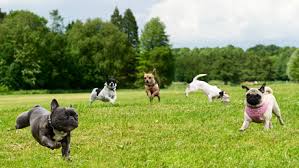
Returning to dog parks, in my opinion, dog parks are the best place for dog fights. Why does that happen? The usual pattern that I see in dog parks is that the owners just go in there, leave their dog off-leash and start socializing with each other, gossiping about other people, and sharing coffee. Don’t misunderstand me. I am not saying that you should only stand with dogs. However, I always concentrate on my dog and other dogs while I am socializing. I am not ignoring the possibility that there may be some dogs that aren’t trained, some aggressive dogs, or that some unneutered males will start humping each other, and it will turn into a big pond of blood and unfortunately, it is tough to stop a dog fight.
When you want to go to a dog park, you have to make sure that:
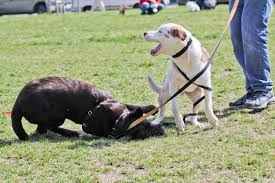
- Your dog is well-trained
- Your dog comes when called
- Your dog is socialized and isn’t aggressive towards other dogs
- Your dog isn’t afraid of dogs (If he is, you have to introduce him to dogs bit by bit)
- If your dog is male, then make sure he is okay being around other males as well, and if there is a female in heat, then it’s best to skip the dog park
- There are no aggressive dogs there
- Your dog doesn’t show aggressive signs towards the other
- You observe the other dogs and move fast if you felt that a fight is going to happen
Remember, dog fights happen instantly, and all the dogs join it even if they weren’t involved. So make sure to stop that before arriving. Here’s a video giving some tips about dog parks:
Socializing Your Puppy Early:
To make sure that you will have a stable puppy, you have to socialize him from an early stage with everything: dogs, cats, birds, people, etc.
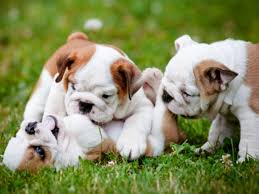
Make sure that your dog is vaccinated before socializing. I made a mistake and made Kira go outside before I completely vaccinated her, and she had Pravo Virus (luckily she was cured), so please, don’t repeat my mistake.
Here’s a great video from Zak George describing how to socialize your puppy correctly:
Distractive-Free Areas At First
So, I was walking a couple of days ago, and I saw an adorable owner with her sweet young Golden Retriever whom she was trying to train. I like to offer help in these situations. So, I ran to her and made a good conversation and had a good playing session with the boy.

Then I asked her why she was struggling, and she told me that her dog never listens to her outside. I quickly realized the problem and asked her: Did you train your dog home first? I already knew the answer. She said no. Then I started to help her.
So dogs are pretty excited about almost everything when they are young. They are excited by runners, joggers, running cars, bikes, new smells, birds, squirrels, etc. They want to know these things and interact with them. They can’t give you any attention at the first moment as they want to get used to the world beside them. When you are training a puppy, you have to start at an area where he is comfortable with no distractions, preferably in his sleeping area because he is already used to it. Start there and make sure that he masters the command there at first.
Move Slowly To A More Distracting Areas
A follow-up tip for the previous one.
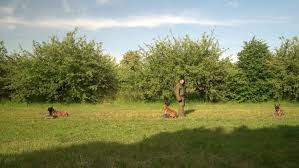
If your dog is excellent at home, that means you are ready to take him to the next level. I made this a separate tip because I wanted to describe in-depth how to to do so. Because, commonly, people can push their dogs suddenly that their dogs won’t be able to cope with that. That’s why I want to describe here:
How Do Dogs Improve At Anything
Dogs improve by practicing and grading. You can look at your dog’s training as a massive set of stairs that you want to go up there, taking one step at a time.
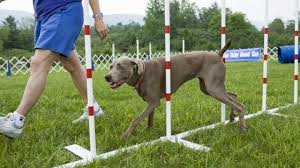
Dogs improve at anything, mainly by routine and patterns. Remember my first tips. I advised never to have a pattern in walking, treats, etc. because when dogs know the pattern, they aren’t excited or stubborn.
However, in training progression, I prefer to have a pattern so that the dog will expect what he will do next then slowly remove the pattern. My pattern usually is that I train at home, then in front of the house, then in a quiet street, then in a crowded street with precious treats like pieces of chicken or hotdogs. Stay away from places where there are animals at first.
When you succeed at that, start going near parks, duck ponds, or places where there are birds. Start by standing far, then bit by bit decrease the distance. Don’t push your dog too hard, take it bit by bit and be mindful about when you should stop now and continue later (see the previous tips)
Here’s a great video from Zak George to describe the process:
Draw An Image Of What You Want From Your Dog
A great piece of advice for any owner is to think about how he wants his dog to be. For example, training your dog to be guard is different from teaching your dog to participate in shows.
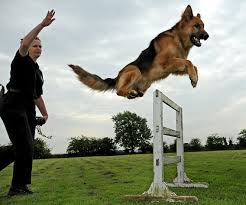
Not all of us train our dogs for a particular purpose, like me, I just wanted to train a dog to have an obedient dog whom I can take and go to any cafe with him/her without any problem. But this didn’t hold me back from sketching what I want from my dog. I determined the purpose of my dog and followed it. I wanted her to be sweet and gentle, playful, but yet obedient and protective. I remember the number of people that said GOLDEN RETRIEVERS CAN’T BE OBEDIENT OR GUARDS. They only want to play. Now, Kira is the most playful dog in the neighborhood, and yet, if she felt a suspicious person, she will terminate all the play and start watching him and barking on him if he began to do something questionable. She never allows anybody to come close to my car, yet she plays with all the people. I can leave her blindly, and I am sure that she won’t harm anyone. However, if she felt that someone is threatening, she will start acting like a Rottweiler.
Now, people are saying, “OMG, you are a genius!” and I am telling them no, all dogs can do this. You just listen to the people who say, “That breed isn’t good, bla, bla.”
Understand what you want from your dog and build your dog based on that purpose. You will see how your dog is capable of anything!
Don’t Change Rules And Stay Consistent
Do you refuse that your dog can get up on the couch, sleep on the bed, or stay in the kitchen beside you? Okay, don’t change your mind then.

A prevalent mistake that I see a lot, that people allow their dogs to get up on the couch for when they want and refuse them to do so at other times. I find that confusing, what should the dog do? You can teach them, for example, to get up on the couch at a particular event and refuse him to do so at another event. However, you can’t change the rules randomly.
If you want your dog to always stay on the ground, then don’t allow him to get up on the couch even when you want a TV Partner at night. If you agree for the dog to get up on the couch, then don’t yell at him when you see him sleeping there. Determine the rules and stick to them. Remember, dogs love routine.
Sketching The Household Rules Before You Start Training Your Dog
Nope, this is different from the previous tip.
What I mean here is sketching the rules like: Where will your dog sleep? Where will he do his potty? Where does he eat?
Because sometimes, people buy their dogs and then write on Facebook that they couldn’t find a place for their dog to sleep or their dog became too large for the house. That’s why I suggest looking at the breed you will get before really getting it and sketch the place and the rules that your dog will follow. I always advise people to do so before buying their puppies so that they understand what should happen in the first 72 hours.
This is a good video from Zak George about behaviors inside the house:
Turning Training Into A Habit
How many times do you train your dog? Once in a while.
I ask this to any owner I meet. 70% of them answer that question by saying, “Once in a while.”

You have to make commands part of their day. For example, always make them sit before opening or closing the door or stay in the down position. It’s not important what the exact command that you say, it’s vital that you make have training part of their routine. So, they will stay before eating until you allow them to eat or to sit before greeting people.
Also, during walks, make sure that you combine walking and training to gain the perfect results. Training is the primary fundamental for keeping your bond as healthy as possible.
Cut The Bad Habits As Early As Possible
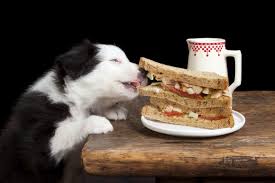
You were sitting with your family eating a sandwich, and your dog suddenly jumped and took a sandwich from your hand. He is a good dog, and you trained him very well that he can never do that. So you say, “He is a good boy, and he has never done that, maybe it is a mistake.”
A week later, you post on Facebook, asking how to deal with a dog that jumps on EVERY FOOD!
Dogs progress quickly, and as I said, once they know a routine to follow, they will progress faster than you can imagine. My advice is that you always move early, don’t punish your dog or stop treating nicely. But instead, make the dog follow the rules and take a step back.
For example, I trained Kira to never pee inside the house. A few months later, she peed once in the morning because she has been drinking the whole night (Kira had a very playful night), and when I woke up, Kira kept barking at me to tell me that she wanted to pee, but I didn’t understand. However, I didn’t get angry but started to take a step back and go out often and give her a generous treat whenever she pees outside.
I know that this was a mistake, but I had to deal with it from the first moment so that she won’t understand that peeing in the house became possible — however, no hitting or yelling.
Handling Mistakes Gently
A great tip that I can give is to manage your dog’s mistakes as gentle as possible. Every time you hit your dog or yell at him can destroy the bond between you.
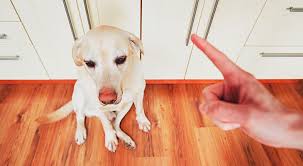
Your dog shouldn’t be afraid of you. Instead, the dog should share every moment with you happily. So what to do if your dog makes a mistake?
Depending on the mistake, some mistakes can be ignored and concentrate on training the dog to counter that mistake (like the potty mistake I mentioned above), and other errors might need some action. A typical pattern that I followed was “Stop Playing.” When Kira makes a mistake, I take her toys. I don’t punish her, but instead, I take my treats.
Sometimes, the dog can be a demon that he doesn’t listen to anybody and bites people, etc. In that case, I offer to put him out in his crate. Every time he bites or makes a huge mistake, move him to his container to understand that, “You did something terrible that you aren’t allowed to stay with us here now.”
However, leave the time-out technique to extreme situations. I prefer to leave it when something serious happens.
Here’s a video of Zak George explaining the concept of stopping the demon behaviors:
Make sure To Revise Daily/Weekly
Every day I try to train Kira something new. However, don’t stop revising on the previous commands to make sure that your dog will always be ready to listen to your orders.
Don’t Stop Training When The Dog Is Adult

That’s a mistake that I made as well. I concentrated on training Kira as professional as possible, and when she became excellent, I stopped. I said she is excellent and doesn’t need to be trained every day as before. 3 Months later and Kira stopped responding to Sit, down, or come. Yes, my mistake.
This tip is mandatory for every owner. Please check that your dog listens to commands always. Otherwise, he will start ignoring them.
Exercise Before Training

Most energetic dogs (husky owners can relate) will be too excited to train. They will start jumping around you and trying to tug your hand instead of actually training. They love being around you.
A good practice to follow with these dogs is to give them some playing sessions before training like a quick fetch game or a tug of war game. A good thing to do with them as well is using toys as treats. Since they want to play, you can use that. Trying to decrease their hyper energy levels will help you a lot in training.
A good video of Zak George explaining that tip:
Don’t Change Keywords For The Same Action
Once you determine the keyword for a particular trick or a command, you should stick to it.
You can change the keywords for the same action. However, I prefer to use constant words to cut down any confusion for my dog. This trick will increase the dog’s training speed dramatically.
Using Hand Signals with verbal commands
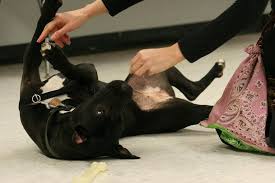
What most people don’t know is that dogs are great visual learners. Using a hand signal can make your dog learn the command 10x faster. All the behaviorists said that signs and gestures are more effective than verbal commands.
However, take care that sometimes the dog might respond only to gestures and won’t listen to the verbal commands anymore. So, a great pattern that I follow is that I slowly remove the hand command as I progress with my dog and only use verbal commands.
A great video from Zak George explaining the Hand Signals:
Be Realistic
I know it sounds weird, but when I looked into the training problems of some people, I often see that most of these people have training issues because they expect too much from their dogs without the required training to achieve what they want. If you want your dog to be a champion, then give him the training that will make him a winner.
Ask For Other People To Train Him
A typical pattern that I always notice in my friends’ houses that the dog will listen to the commands of his trainer ideally and ignore the other. Unfortunately, that’s the case at my home as well. Kira listens to whatever I say correctly, but she may ignore my family.
To understand how to solve this, you have to follow the cause of this.
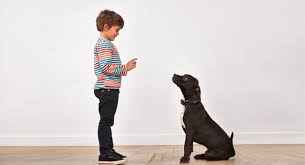
So basically, dogs develop a relationship with any person in the house. However, they only think that their trainer is the authorized person, and no one should ask them to do anything except him. They believe that they’re in a higher position than almost all the people in the house.
To prevent that bad behavior from taking place, it’s a good practice to let your children & your family train your dog once in a while. That will always make him ready to receive commands from any person. By doing this, you will also eliminate the possibility of behavioral issues.
A good video from Zak George explaining that:
Increase Your Dog’s Intelligence
If you followed this trick, it would help you a lot.
Dog’s intelligence is trainable. It already improves by training, following a routine, and a bunch of possible games.

We can increase the dog’s intelligence by providing him some puzzling and challenging games that will make him curious and will improve his problem-solving skills. By doing this, you will increase his IQ dramatically and will make him learn faster. This trick will also tire him during the day, and that’s called Cognitive Training. You can find a lot of puzzles on the internet for dogs.
Another proper training is the Food Challenge, where you put his food in a spiral plate or a puzzle plate and let him search for it until he finds it. This training will also increase his IQ, and whenever the IQ increases, he can learn faster.
Read And Ask
The final tip is for you 🙂
We don’t know everything. I don’t know everything, and no one knows everything. It’s fine to ask what to do with a specific behavior and search forums to determine what you can do. However, try to think about the solution before you apply it on your dog and think about it from the dog’s perspective, will it harm the dog? Will it destroy the bond between you? Will it make the dog uncomfortable?

If the solution doesn’t make sense to you, then it’s wrong. The problem is the dog’s world is full of people that are providing many answers to the same behavioral question, and usually, you end up being skeptical about all of them. That’s why I advise you always to make sure there’s no harm associated with any solution. Also, try to read some training books, you can see my suggestion about the best training books in our post here.
How Do dogs get trained?
This is bonus information.
If we look at Wikipedia, it says:

Dog training is teaching a response to cues or commands, or the performance of actions not necessarily natural to the dog, and also raising a dog accommodated to his environment by modifying natural digging, barking and eliminating behaviors. Dog training is defined as the purposeful changing of a dog’s behavior.
Wikipedia
Yes, that’s true. You are teaching him to do something unnatural to him, either by sitting when asked or by following a specific routine.
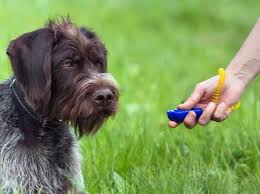
Dogs get trained by binding the action to the gesture or the voice and by receiving a confirm statement that tells them, “Yes, that’s right,” and that can be in the form of a treat or a quick play session.
So when we train puppies not to bite, you will always hear people saying, “Don’t continue playing when he is biting,” and that’s 100% true because you are giving him the confirm statement that biting is a beautiful habit that he should acquire. You are rewarding him for biting you. By the way, here’s a video on how to stop dog biting by Zak George:
If you read the above words carefully, you will understand that dogs don’t need to be in a formal training session to acquire or learn new habits. Still, instead, they can learn new practices and think that these habits are likable because the owner rewarded them.
Also, dogs aren’t lazy, they don’t acquire a new habit then sit still or calm down, but they always try to challenge themselves to be able to do ore things and live entirely in their human world, which makes them perfect to be trained.
Why is it important to train your dog?
A question that might arise in your mind is, “Why should I bother myself with all these things?”
That’s normal, why we should train dogs. As I mentioned, dogs aren’t born to live with humans. You have to teach them to redirect their wild behavior into a domestic action that is acceptable in the human world.
Conclusion

Dog training is the true meaning of fun and challenge. You are trying to challenge yourself to make your dog do the position that you want. If you built the right relationship and used certain tricks, you can achieve the fastest training ever. It’s not meant to be difficult and complicated but comfortable and lovely.
It was a long post, but I made sure that you get every point, and in fact, I can say that this is a summary of my life with Kira and what I learnt along the road. Don’t forget the giveaway. Also if you wanted to ask any question about dogs, you could drop it in the comments, and we will help you 🙂
HAPPY NEW YEAR EVERYBODY!

